Pacific Drive review: Into the unknown
While some of its looting mechanics feel a little stale in comparison to how it evolves other areas of the genre this likely won’t deter most players from seeing this intriguing story through to the end. Instead, Pacific Drive is one of the most intriguing games I’ve played in 2024 so far. It borrows concepts from the likes of STALKER and Firewatch, and combines them to create an accessible survival rogue-lite that’s a joy to engage with. Seeing your car gradually transform from a heap of junk to essentially a life support system is a satisfying experience, and only enhanced by the weird and wonderful world you get to drive it about in.
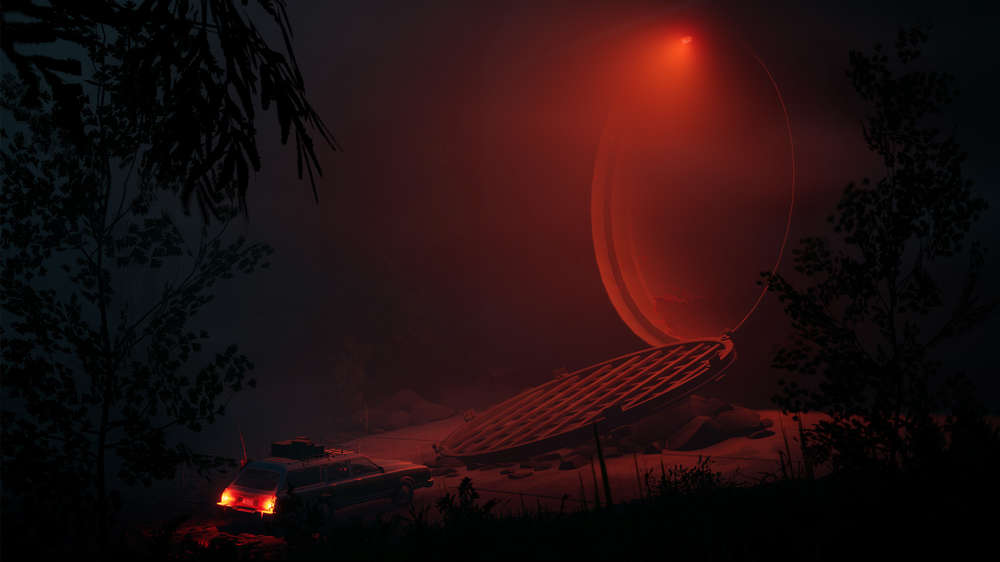
While some of its looting mechanics feel a little stale in comparison to how it evolves other areas of the genre this likely won’t deter most players from seeing this intriguing story through to the end.
Instead, Pacific Drive is one of the most intriguing games I’ve played in 2024 so far. It borrows concepts from the likes of STALKER and Firewatch, and combines them to create an accessible survival rogue-lite that’s a joy to engage with. Seeing your car gradually transform from a heap of junk to essentially a life support system is a satisfying experience, and only enhanced by the weird and wonderful world you get to drive it about in.
Images via Ironwood Studios
Platform(s)
PC, PlayStation 5
Released
23/02/2024
Developer
Ironwood Studios
Genre
Survival
Publisher
Kepler Interactive
Engine
Unreal Engine 4
Multiplayer
No
ESRB
Teen, Fantasy Violence, Language
After almost an hour of trekking through a series of areas in the Olympic Exclusion Zone, I finally reach my destination - deep inside the midzone in my quest to uncover what on earth is happening in this mysterious place. A deadly radiation storm is brewing, and I need to get back home. Fast.
After retrieving the final item in my quest for knowledge, my safety bubble collapses. On top of that radiation storm, an energy field is enclosing around me, and I’m left hurling my hunk of junk car through the underbrush of the Pacific Northwest towards a beam of orange light shooting up into the sky. It’s my one-way ticket out of there.
All the while I’m wrestling with the steering wheel, desperately trying to keep this rustbucket on course as I dodge trees, bushes, and steep, craggy declines. Radioactive goo is raining down from the storm above, ripping all the doors, windows and bumpers from my car. With seconds to spare, I speed into the beam of light, teleporting me back to the safe haven of the Auto Shop. My scavenged items are all intact, further knowledge of the zone is secured, and I’m ready to do it all over again.
This is the core gameplay loop of Pacific Drive, a rogue-lite title developed by Ironwood Studios that’s loosely based on the Roadside Picnic novel from the 70s. Featuring a roughly 20-hour story, this game had me captivated from the moment I first set foot in its gorgeous world. With incredibly tactile gameplay, and an atmosphere that strikes the perfect balance between inquisitive, horrific, and downright tense, this is a 2024 sleeper hit that you don’t want to miss.
GGRecon Verdict
While some of its looting mechanics feel a little stale in comparison to how it evolves other areas of the genre this likely won’t deter most players from seeing this intriguing story through to the end.
Instead, Pacific Drive is one of the most intriguing games I’ve played in 2024 so far. It borrows concepts from the likes of STALKER and Firewatch, and combines them to create an accessible survival rogue-lite that’s a joy to engage with. Seeing your car gradually transform from a heap of junk to essentially a life support system is a satisfying experience, and only enhanced by the weird and wonderful world you get to drive it about in.
Welcome to the Fun Zone
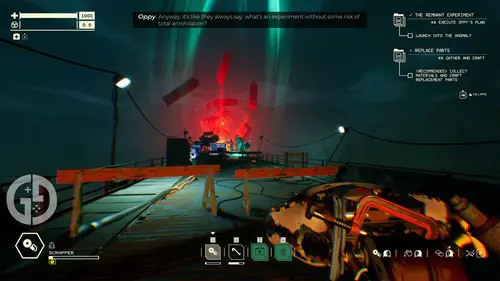
Equipped with a beaten-up old station wagon and not much more than a scavenging tool, you’re trapped in a fenced-off Exclusion Zone housing a smorgasbord of anomalies. The only way out is to dive deeper into the Zone and uncover its mysteries, harvesting resources as you go to upgrade your car’s capabilities, allowing you to survive the challenges that the inner zones present.
Set in the late 1990s, the Olympic Exclusion Zone is home to an area that appears to have been visited by aliens. The only thing is, they didn’t stick around, instead leaving behind all sorts of weird and wonderful artefacts that no one’s sure how they work, or how they even got there.
The car that you come across is known as a Remnant, an artefact of the Zone that’s been affected by whatever’s happened there. The player character becomes tied to the Remnant after coming across it in the woods and is swiftly contacted by three characters over a radio. Outside of uncovering the story for yourself out in the Zone, these three characters serve as your only points of contact, and vehicles for most of the game’s exposition and tutorial.
The presentation here feels very similar to Firewatch, with each character’s feelings and motivations relayed expertly through their disembodied intonation. You can tell from the get-go that Oppy is stern, and might not be telling the truth to the whole player. The duo of Francis and Tobias offer a bit of comedy relief, but the rivalry that develops between them and the other Zone researchers is what drove me (pun intended) to uncover more of this game’s secrets.
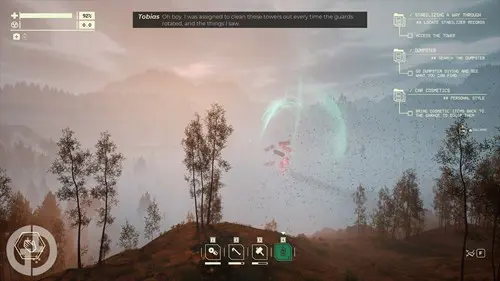
However, the main motivator for wanting to explore more of the Zone is just how intriguing the world is that Ironwood Studios has designed. The expansive, luscious forest of the Pacific Northwest is gorgeous itself, but it’s littered with post-apocalyptic ruins of car wreckages, research outposts, and most importantly - Anomalies.
Anomalies can take plenty of forms. Some might be quite tame, like a swirling cloud of energy that mostly wreaks havoc with your car’s steering and electric systems. Physical manifestations of anomalies appear in the form of floating robots. The most common of these will be picking up your car with a tether and flinging it in a random direction should you drive beneath it. Another variation of this called the Pickpocket will steal random pieces of your car, which you’ll have to chase after to get back.
None of these anomalies are outright dangerous, or even antagonistic to an extent. They all serve to just be a bit of a nuisance as you venture deeper into the Zone, slowly chipping away at your car’s defences and resources as you go.
Given that there’s no real explanation for what these anomalies are, how they got here, or why some of them resemble human technology, there’s a level of uncanny valley that makes you wary of them, but also extremely curious at the same time. Especially as you near the inner areas of the Exclusion Zone, this ramps up in a big way, serving as an excellent motivator to keep playing and learn more about the story.
Pimp my ride
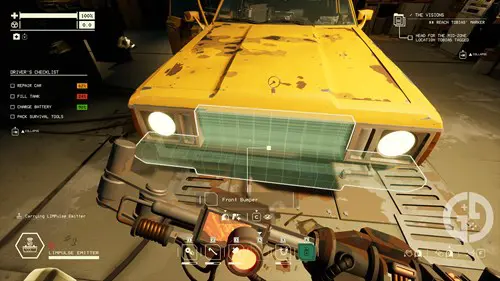
The real star of the show in Pacific Drive is the car, which you’ll be spending a good 75% of your time in while playing. At the beginning of the game, this is a real sh*tbox, composed entirely of ‘Crude’ panels that are held together with a bit of duct tape and prayers.
Even the act of driving this thing is a bit of a chore to begin with. The engine chugs, and it handles like it weighs a tonne. You’re responsible for the ignition, handbrake, headlights, and wipers too, which are all manually operated by the player. It gives a tactile feel to the gameplay, and almost a deeper connection to this vehicle as a character. You have to operate and take care of this vehicle properly - you’ll only leave the handbrake off while on a slope once when it careers into a tree and rips its doors off.
In Pacific Drive, you don’t upgrade your player character - you upgrade the car. Back at the hub area of the Auto Shop, you can break down your scavenged items into raw materials that can then be crafted into upgrades for the station wagon. Stronger, more resistive panels help you sustain more knocks. Chunkier tyres make offroading a breeze. Then there are the additional storage boxes and fuel canisters you can mount to the side of the roof, letting you drive much further into the Zone without worrying about the basics.
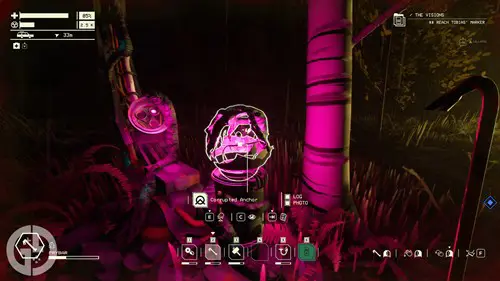
While you’re in the Zone, you’ll harvest three different types of energy. This is used to teleport your car back to the home base, but also a Fabricator device where the player can develop either new equipment for the base or blueprints for the car.
Anyone who’s played a rogue-like before can already see where this gameplay loop is going. You take your car out into the Zone, scavenge for resources, survive for as long as you can while exploring as far as you dare, and then return home to lick your car's wounds and gradually increase your capabilities for the next run.
There’s an overarching story with quest markers that guide you through the key plot points, which is fairly easy to follow. For the first ten hours, I also felt like I was reasonably equipped for the challenges that the story Zones would throw at me. However, it was as I began to venture further into the mid and inner Zones that I felt as though a bit of grinding for resources was necessary for these longer trips to remain viable, and these are where the cracks in Pacific Drive’s almost impermeable formula begin to show.
Where we’re going, we don’t need roads
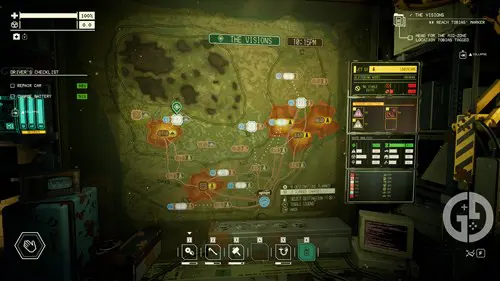
Pacific Drive isn’t an open-world game. Instead, each Zone is split up into several different areas denoted by highway codes, and you’ll need to pass through each of them in sequence to reach the further edges of the Zone. As such, longer drives become increasingly more arduous as fuel reserves and battery capacity quickly become a cause for concern.
While the roads you’ll drive are the same for each Zone, there’s an element of procedural generation here, with buildings, anomalies, and weather conditions all randomised on each run. This helps to remove some elements of repetition, although it doesn’t do much to help the rather repetitive looting scenario.
It’s a shame because much of what Pacific Drive does pushes forward the survival genre forward in a big way. Sadly, looting the same containers and buildings very quickly becomes samey, with the player opening up a menu, pressing T to transfer all the resources, and pressing Y to auto-sort them in the Tetris-style backpack system.
There are tools you can craft to optimise looting a little, such as the Auto-Vac which hoovers up all resources in an area, or a Scanner which scouts out specific resources that you might be searching for. However, it doesn’t negate the fact that scavenging for resources is easily the weakest element of Pacific Drive. While navigating the Zones in my car remained engaging throughout, it wasn’t long before I fell back on some second-screen entertainment, like a podcast or TV show to stave off the monotony.
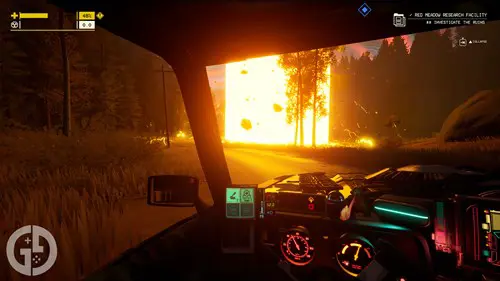
Thankfully, the end of each run is something that I always look forward to. Once you feel ready to return to base, you’ll need to use your harvested energy to open up a gateway - a huge orange pillar or light that will transport you back to the Auto Shop. However, this can only be done from from a certain distance away, and once you open it a huge energy storm circle will close in on you, much like a battle royale.
What ensues is a race against time as you hoon your car through the environment towards this gigantic beacon. More often than not, these gateways aren’t located on roads, so you’ll need to dodge trees, steer into drifts, and generally do everything you can to reach the gateway before the storm reaches you. You can tweak the difficulty to your liking, but failing to extract can mean the loss of either some or all of your hard-earned resources, so the stakes are high.
With an ominous synth soundtrack that constantly rises in pitch and volume as the circle encloses, these are some of the most tense, yet entertaining sequences that Pacific Drive has to offer. If you thought your station wagon felt like a hunk of junk while driving carefully on the roads, it’s a whole other ball game when wrestling it cross country with peril at your heels. It makes reaching the gateway even more of an achievement, and stimulates that little voice of dopamine in the back of your head: “Just one more run…”.
The Verdict
While some of its looting mechanics feel a little stale in comparison to how it evolves other areas of the genre this likely won’t deter most players from seeing this intriguing story through to the end.
Instead, Pacific Drive is one of the most intriguing games I’ve played in 2024 so far. It borrows concepts from the likes of STALKER and Firewatch, and combines them to create an accessible survival rogue-lite that’s a joy to engage with. Seeing your car gradually transform from a heap of junk to essentially a life support system is a satisfying experience, and only enhanced by the weird and wonderful world you get to drive it about in.
4/5
Reviewed on PC.
Comments

